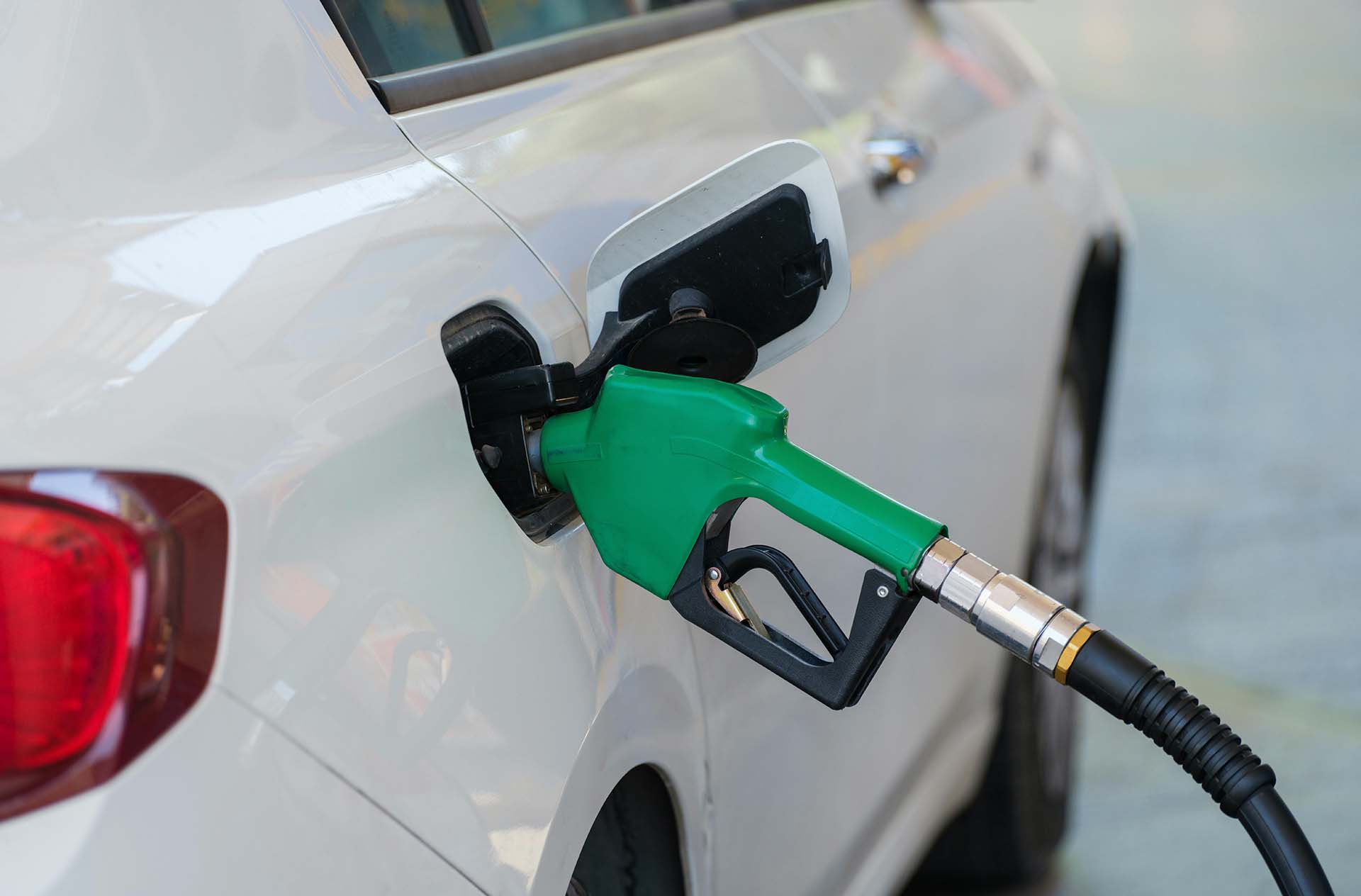Are you having trouble starting your vehicle? Does the engine make spluttering and coughing sounds once it’s turned on? Well, there might be moisture or condensation in the gas tank. If this is the case, learning how to use dry gas will help you prevent the buildup of water. Let’s help you get rid of any traces of water inside the combustion chamber and get your ride back on track.
Water Is Important for Engine Performance – But It Shouldn’t Contaminate the Fuel
A mixture of coolant and water in the radiator keeps your vehicle from overheating, and the electrolytes in water are also needed for your car’s battery to be properly charged. In fact, numerous patterns for water-fuelled four-wheelers exist but we’ve yet to see it – that would be quite a plot twist in vehicle evolution, right?
Every day, we’re getting closer to that future. For instance, the recently unveiled Toyota Mirai is a so-called Fuel Cell Electric Vehicle that mixes hydrogen and oxygen to generate power, zero exhaust emissions included. So, in some aspects, water is essential for good engine performance. But, once it’s in the gas tank, it can become a serious problem.
Telling Signs That There Is Water in Your Gas Tank
A gallon of gas weighs around 6 pounds, and when it starts to burn in our vehicles, the carbon pulls 14 pounds of oxygen from the surrounding air, letting out as much as 20 pounds of carbon dioxide. No wonder why we’re looking at a greener future! Still, technology has come a long way, and fuel management systems these days are very complex and fairly forgiving – putting in the wrong gas doesn’t always mean a dead engine.
However, if there’s a water buildup, your car will start showing signs that there is a problem very quickly. Figuring it out as soon as possible is essential in order to prevent further damage. So, here are the most common symptoms of water buildup in the gas tank:
- Weird sounds – if your vehicle is making coughing sounds or is hesitating and sputtering while it’s on, there might be water in the tank,
- Poor acceleration – if you have a difficult time speeding down the road and you’ve checked if there’s anything wrong with the gas paddle, it might be because of the moisture,
- Bad mileage – if there’s moisture, the engine power will reduce over time, and this will have a negative effect on gas mileage, eventually leading to biodegradation,
- Engine stalling or not starting – when there are large amounts of water, the engine will stall or not start at all, and this is known as a hydrostatic lock.

What Is Dry Gas Exactly, and How Does It Work?
To fix the problem of moisture and condensation in the tank, gas and oil engines require alcohol-based additives, and that’s where dry gas comes into the picture. There are many brands that are available today, and most of them are used as preventive measures. Due to its chemical properties and composition, dry gas remains the top pick of these additives.
Alcohol Is the Key Ingredient in Dry Gas
While this type of fuel additive contains microscopic amounts of dissolved liquid hydrocarbons such as octane and hexane, it is primarily made of methane, which explains why it’s also known as consumer-grade natural gas. With methanol or isopropyl alcohol as the key ingredient, the dry gas acts as a hygroscopic substance, meaning that it attracts water through absorption, and then all of it is burned off in the combustion chamber.
To put it simply, dry gas has alcohol in it, so when it’s poured directly into the tank, it absorbs any traces of water, and it’s burned off together with fuel in the combustion chamber. While it’s not a crucial part of scheduled maintenance, it’s an excellent solution to any problems caused by moisture and condensation. This is particularly important during the winter months because the water can freeze and cause further damage.

Many Brands of Fuel Additives Are Available on the Market
Research done by the American Petroleum Institute (API) shows that high-quality additives can improve the vehicle’s fuel efficiency by 3%, and for the daily driver, that’s quite an improvement. On top of that, these special products can enhance engine performance by as much as 5%.
Because of these beneficial properties, many car owners choose to keep a bottle or two of dry gas in their garage, especially those who have a vintage gem or an older imported model in their collection. You can find plenty of additives online or in the store, and you’ll see that many of them do much more than get rid of the water in your tank. Here’s an overview of the most popular products, along with their properties and pricing:
| Brand | Properties | Pricing |
| Star Tron Enzyme Fuel Treatment | Protects unused fuel for up to 2 years, formulated for E10 engines | $6.98 |
| Sta-Bil Fast Fix | Engine treatment, eliminates water | $8.99 |
| Heet Fuel Additives | Absorbs water, prevents rust and corrosion | $9.33 |
| Sta-Bil Storage Fuel Stabilizer | Keeps the fuel fresh for up to 2 years, works for all gas engines | $11.99 |
| Royal Purple Max-Clean Fuel Stabilizer | Improves fuel economy when used as a regular additive | $20.99 |
How to Use Dry Gas and Is It Absolutely Necessary
So if you’ve figured out there’s a problem with moisture and water buildup in your car, there are two steps you need to take. First, dilute the contaminated fuel with some more fuel, and follow this up with a dry gas treatment. Just pour a bottle of dry gas according to the instructions on the product to get the right amount mixed in. This should be done with every fill-up during winter, but you should do it at least every 5,000 miles.
If your vehicle still has bad performance and the symptoms prevail, you should take it to a qualified mechanic and see if there are any major problems. A professional mechanic will have the tools and knowledge to completely remove all traces of water in the contaminated areas.
Different Engines Respond Differently to Dry Gas
While you should know how to do a basic maintenance routine, like adding brake fluid or, obviously, changing a flat tire, dry gas may not necessarily be a part of it. But, if there is any reason to suspect a vehicle has water-contaminated fuel, it’s an excellent solution to this problem, especially in winter.
However, there are different kinds of engines, and not all of them respond in the same way when treated with this additive. Furthermore, modern fuel systems are made from delicate and often cheap materials like rubber and plastics, and they may degrade when in regular contact with alcohol. That’s why you should consult with your mechanic or read through the owner’s manual to figure out if you’ll be doing more damage than good.

How Does the Water Get In There and What Kind of Damage It Could Cause?
While modern fuel systems are sealed well in comparison to older models, moisture can still build up in your tank by the accumulation of condensation. If your cap is not tight enough, water can get into the tank during heavy rain or even while using the car wash. Also, condensation can make its way during special weather conditions, such as high humidity levels.
Any moisture in your engine can be quite dangerous to your vehicle. If it’s not fixed as soon as possible, it will spread like a forest fire to other parts causing further damage and costly repairs. Here are the damages moisture can cause to your vehicle:
Corrosion Can Be Very Detrimental to Your Vehicle
Even just a trace of water can result in oxidation, and rust will slowly start eating away at the metal on the inner lining of the tank. Small flakes of rusty metal are released into the fuel, and while special filters take care of any large chunks, the finest parts will be able to pass and go on their damaging journey through the injection system.
Corrosion is especially damaging to the injectors and the whole engine. The injectors might get clogged, the engine can run hot, and the flow of the fuel might be limited. On top of that, the destructive nature of corrosion can make a hole in your tank and consequently cause a gas leak.
The Water Freezing Can Cause Cracks and Malfunctions
Once the temperature drops to 32°F or lower, the water accumulated in your tank will be frosted and form ice crystals that can be very detrimental to every part of your vehicle. The engine performance can decrease, the carburetor passageways can also crack, and the corrosion of metal surfaces occurs no matter if the water is frozen or not.
The Engine Power Will Diminish Over Time
Even if your trusted companion for the road is not obviously damaged from corrosion, the engine performance can still decrease over time. You will start to have problems with acceleration, and poor performance will also have a negative impact on mileage. You don’t have to be a car expert to know that these kinds of damages can potentially turn into quite expensive repair bills.
There Could Be a Hydraulic Lockup
Also known as a hydrostatic lock, or just hydro-lock, this is something that happens when water gets into the engine cylinder through the injectors. The result is simple – the engine won’t start, but this is a serious problem that can cause irreversible damage to the entire system. It is the worst-case scenario of having water accumulating in your tank, but it can happen very easily.
Additional Tips for Preventing Moisture From Getting Into Your Fuel Tank
As I’ve mentioned before, if there’s moisture in your fuel tank, you will be able to tell that something is wrong right away. When that happens, the dry gas should be added to the tank as soon as possible. But as we all know, prevention is always better than the cure. There are things you can do to prevent water from getting into your tank, and while it won’t completely ensure that it won’t ever happen, it’s still good to be cautious.
Try to keep your tank as full as possible at all times because the more fuel it contains, the less space there will be for moisture or water vapor. Even if there are any traces of water, it will be much more diluted and less capable of causing any serious damage. Also, it’s a good idea to fuel up at a station that’s constantly busy and where the fuel turnover is high. This will ensure that you’re getting fresh fuel from the station’s storage tanks, which is less likely to contain water from condensation.

In Certain Cases, Dry Gas Will Be Your Only Solution
There are many responsibilities and costs to owning a car, no matter if it’s a brand-new or a used vehicle. And while using dry gas is not mandatory, it’s still a good idea to do so because it helps keep the car’s engine working as efficiently as possible. It’s always better to be safe than sorry, so having this additive in your garage will ensure you have the right solution ready if certain problems do arise. It will definitely save you not only money and time, but in the long run, it will save your four-wheeler as well.








